
Streets: Jorge Rodriguez-Gerada –“Connection” (Beirut)
↧
↧
Studio Visits / Previews: Sainer (Etam Cru)

↧
Overtime: Nov 20 – Nov 27

- Opening of Dubai Frame pushed back to January 2018.
- 11 takeaways from the $2.3 billion worth of art sold in NY last week.
- Guantanamo prisoners don't own their own art.
- Adidas settles lawsuit for launching "Art Basel" shoe without authorization.
- Monet's glasses sell for $51,000 in Asia.
- Jake Gyllenhaal set to take role as art critic in new movie.
- Using AI to identify good investments in art.
- The next novel use for AI might be in authentication and identifying forgeries.
- $10 flea market find might be a photo of Billy the Kid and worth millions.
- Lineup for Pacific Standard Time's performance art festival announced.
- Thief walks out of gallery with a €425,000 bronze. Two suspects charged.
- Doubts Leonardo da Vinci painted the $450 million Salvator Mundi.
- Madsaki talks ahead of his exhibition at Galerie Perrotin Seoul.
- An interview with Dalek on the return of the space monkey ahead of his Thinkspace show.
- Audrey Kawasaki already at work on her new mural for Art Basel Week Miami.
- Swoon working on a new series of art under glass domes.
- John Baldessari and emojis.
- Cai Guo-Qiang to detonate artwork in Chicago for 75th year anniversary of 1st nuclear reaction.
- An interview with Kehinde Wiley.
- Oscar Murillo hangs his black flags in Palestine.
- Katy Perry and Urs Fischer create sculpture together.
- How Yayoi Kusama built a market for her work.
↧
Recap: POW! WOW! Korea 2017

↧
Streets: Peeta (Italy)

↧
↧
Overtime: Nov 28 – Dec 3

- Something new from Banksy on the separation wall in Bethlehem.
- One of the New Orleans Banksy pieces restored.
- A new print from Mobstr.
- Jack Pierson designs bags for Dior.
- A studio visit with Henry Taylor.
- A chat with Tomoo Gokita.
- Sam Falls opening a show at the Hammer Museum soon.
- Mark Bradford to create a "waterfall" work for the Baltimore Museum of Art.
- James Jean's work with Prada in T Magazine.
- The reason Erin M. Riley is the way she is.
- Flaunt does a feature on Patrick Martinez.
- Damien Hirst's shows closing in Venice w/ $330 million in sales and he doesn't mind the hate.
- Instagram's most popular art posts of 2017.
- How the new US tax plan would affect the art world.
- Artists are getting poorer.
- Steve Lazarides opening new gallery in Mayfair.
- Review of the Shadowman documentary about Richard Hambleton.
- Leonardo da Vinci's Salvator Mundi headed to the Louvre?
- Jenny Holzer & Virgil Abloh teamed up for Sexy Beast / Planned Parenthood.
- An interview with Holzer on Artspace.
- What some Miami hotels have planned for Art Basel.
- Building new museums in Miami are "easy."
- Ever wonder what art hangs on the walls of MI6?
- Federal authorities want to seize "pharma bro's" Picasso.
↧
Streets: Finok (Brazil)

↧
Streets: Dabs Myla (Los Angeles)

↧
Streets: Ian Strange (Stavanger, Norway)

↧
↧
Previews / Interviews: Logan Hicks –“Nightcrawlers and Lightseekers” @ Galerie Openspace

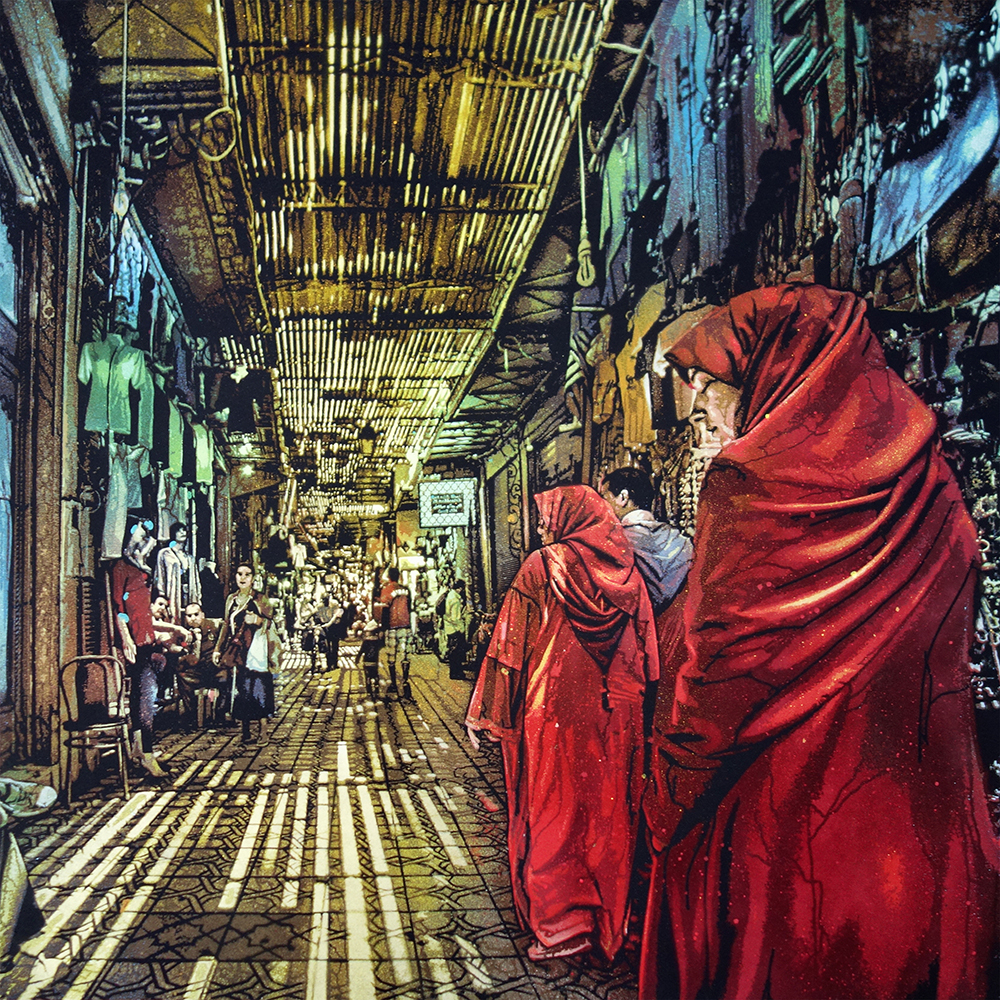 Lori Zimmer (LZ): You’re known for pushing the simple technique of stenciling to incredible, photorealistic lengths. Can you explain how you achieve such incredible detail with stencil and spray paint?
Logan Hicks (LH): I guess that for me, I use stencils to make paintings that don’t look like stencils. I try to elevate the medium of stencils beyond a simple one color crude image. Many stencil artists they tend to spray the outline of something, then fill in the colors as though it’s a coloring book. But for me, I use the lighting as my motivation. I don’t really care where an object begins or ends, I just care about how the light hits it. The lighting is what gives a painting life. When I look at a street scene, I don’t really see the fact that there are X number of cars, or a building here or there but I will notice that there is an LED bluish street light placed next to yellowish sodium street light and painting that tension between the two different lights is what is the most interesting. Stenciling is ideal showing the tension between colors because the mist of the spray paint as it falls onto the stencil is similar to the way that light falls down onto the street surface. In my head, I see a fight between colors when I paint. So in the first layer, maybe i will have a little more blue and only a little yellow, but then the second layer I will have more yellow and only a little blue, and the third will be an equal mix of the two. It is like the colors are fighting each other and that is how I approach the painting that I do. Even though the subject matter I paint may be dead (cars, buildings, streets) the light is alive, it’s the glue that holds everything together.
Lori Zimmer (LZ): You’re known for pushing the simple technique of stenciling to incredible, photorealistic lengths. Can you explain how you achieve such incredible detail with stencil and spray paint?
Logan Hicks (LH): I guess that for me, I use stencils to make paintings that don’t look like stencils. I try to elevate the medium of stencils beyond a simple one color crude image. Many stencil artists they tend to spray the outline of something, then fill in the colors as though it’s a coloring book. But for me, I use the lighting as my motivation. I don’t really care where an object begins or ends, I just care about how the light hits it. The lighting is what gives a painting life. When I look at a street scene, I don’t really see the fact that there are X number of cars, or a building here or there but I will notice that there is an LED bluish street light placed next to yellowish sodium street light and painting that tension between the two different lights is what is the most interesting. Stenciling is ideal showing the tension between colors because the mist of the spray paint as it falls onto the stencil is similar to the way that light falls down onto the street surface. In my head, I see a fight between colors when I paint. So in the first layer, maybe i will have a little more blue and only a little yellow, but then the second layer I will have more yellow and only a little blue, and the third will be an equal mix of the two. It is like the colors are fighting each other and that is how I approach the painting that I do. Even though the subject matter I paint may be dead (cars, buildings, streets) the light is alive, it’s the glue that holds everything together.
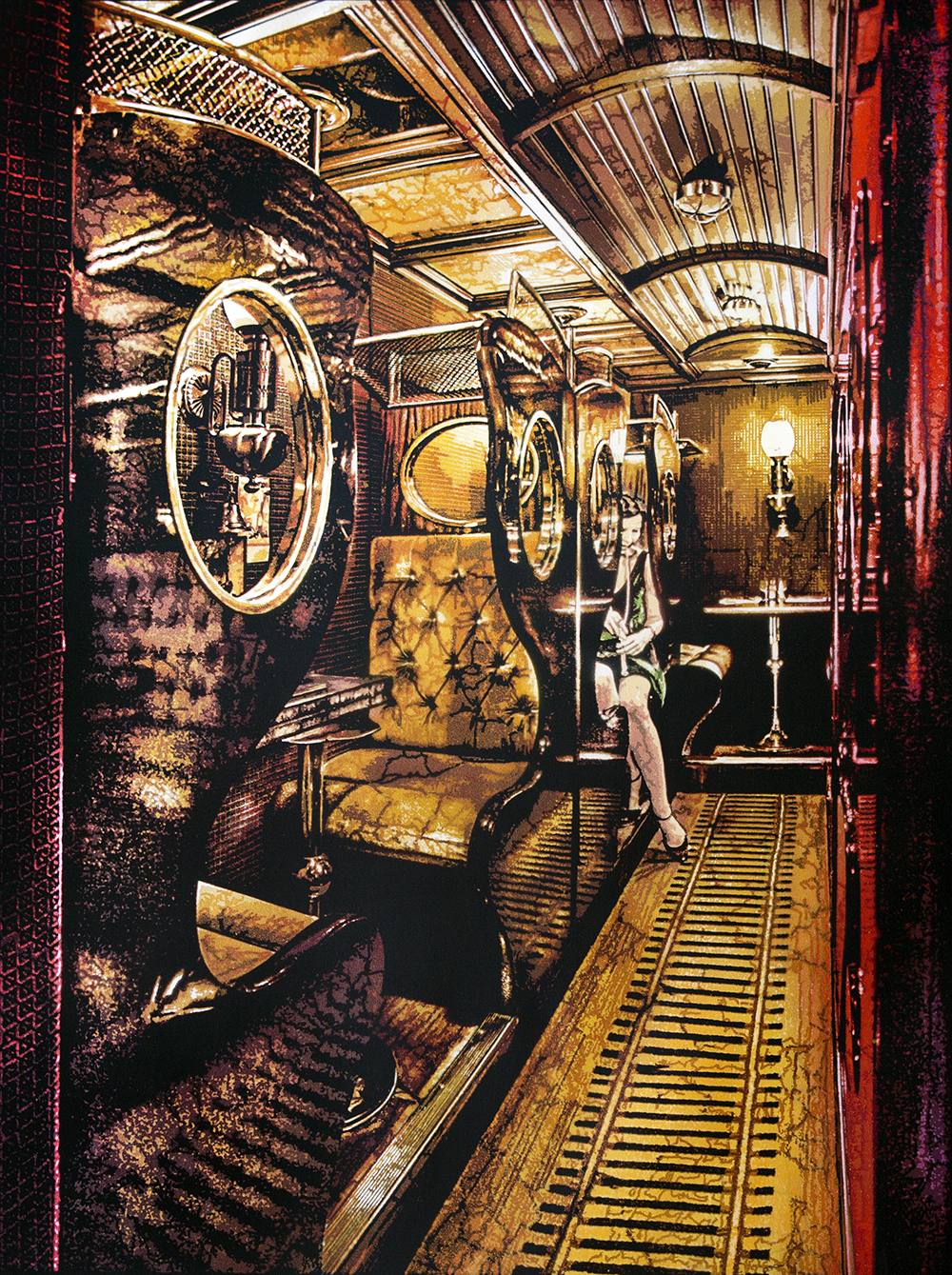 LZ: Since the 1990s, your career has progressed alongside the burgeoning of the urban art genre. How did you start out? Who are some of your contemporaries that continue to influence you 20 years later?
LH: I’ve been fortunate to have a strong network of friends and contemporaries around the world to push me creatively and to help me refine my business practice. Finding someone that is genuinely supportive of you and the path that you are on is difficult to find but essential. Artists such as Christian Guemy (C215) have been extremely supportive through providing opportunities, feedback, or just listening to me vent. We have been to Istanbul, Toronto, New York and Paris together and every time I see him, I feel energized and more driven than before I saw him. Other artists such as Joe Iurato have been instrumental for me pushing me too. We have done many collaborations together and finding ways to make the work you do fit with someone else’s vision is crucial for understanding your role as an artist. In the beginning, my largest market was in Australia and it was Rone (who was running Everfresh Studios at the time) that helped introduce me to people, welcomed me into his house, and vouched for me. In the beginning, in 1999, it was Shepard Fairey who gave me guidance and direction on what I was doing. He would let me know his thoughts and if I ever had a question he was quick with a response. Veterans like Ron English have been amazing to watch as he has continued to push forward with his art and to find new and unique opportunities for how he delivers his vision to people. Having someone like that to turn to is essential for any artist, because without it you just feel adrift in this sea of people without really feeling like you know what you are doing.
When I started in the late 90s, the term “street art” wasn’t really a thing, it was just art that was created by people who wanted their work to be seen, but who didn’t fit into any other art movement. Nobody aspired to be a street artist back then, there wasn’t really any money in it. Street art was cast offs that didn’t fit elsewhere, the same way punk rock was born. After I moved to Los Angeles, things began to click. Stenciling was big in Australia, and later London, so I connected with people like Rone, Lister, C215 and I realized it was a movement. I would just imagine that when I was alseep there was someone around the world who was working, so it pushed me to do more, work harder. Ironically, nearly 25 years after I gave up on the art world, I now feel like I am a part of it. Although I may be a stencil artist, I feel like I am more of a painter who happens to use stencils. Finding new ways to push the boundaries of stenciling has been challenging. Other artists such as C215, Joe Iurato and Chris Stain are others who continue to make the stencil medium new again and who inspire me to push myself even harder.
LZ: Since the 1990s, your career has progressed alongside the burgeoning of the urban art genre. How did you start out? Who are some of your contemporaries that continue to influence you 20 years later?
LH: I’ve been fortunate to have a strong network of friends and contemporaries around the world to push me creatively and to help me refine my business practice. Finding someone that is genuinely supportive of you and the path that you are on is difficult to find but essential. Artists such as Christian Guemy (C215) have been extremely supportive through providing opportunities, feedback, or just listening to me vent. We have been to Istanbul, Toronto, New York and Paris together and every time I see him, I feel energized and more driven than before I saw him. Other artists such as Joe Iurato have been instrumental for me pushing me too. We have done many collaborations together and finding ways to make the work you do fit with someone else’s vision is crucial for understanding your role as an artist. In the beginning, my largest market was in Australia and it was Rone (who was running Everfresh Studios at the time) that helped introduce me to people, welcomed me into his house, and vouched for me. In the beginning, in 1999, it was Shepard Fairey who gave me guidance and direction on what I was doing. He would let me know his thoughts and if I ever had a question he was quick with a response. Veterans like Ron English have been amazing to watch as he has continued to push forward with his art and to find new and unique opportunities for how he delivers his vision to people. Having someone like that to turn to is essential for any artist, because without it you just feel adrift in this sea of people without really feeling like you know what you are doing.
When I started in the late 90s, the term “street art” wasn’t really a thing, it was just art that was created by people who wanted their work to be seen, but who didn’t fit into any other art movement. Nobody aspired to be a street artist back then, there wasn’t really any money in it. Street art was cast offs that didn’t fit elsewhere, the same way punk rock was born. After I moved to Los Angeles, things began to click. Stenciling was big in Australia, and later London, so I connected with people like Rone, Lister, C215 and I realized it was a movement. I would just imagine that when I was alseep there was someone around the world who was working, so it pushed me to do more, work harder. Ironically, nearly 25 years after I gave up on the art world, I now feel like I am a part of it. Although I may be a stencil artist, I feel like I am more of a painter who happens to use stencils. Finding new ways to push the boundaries of stenciling has been challenging. Other artists such as C215, Joe Iurato and Chris Stain are others who continue to make the stencil medium new again and who inspire me to push myself even harder.
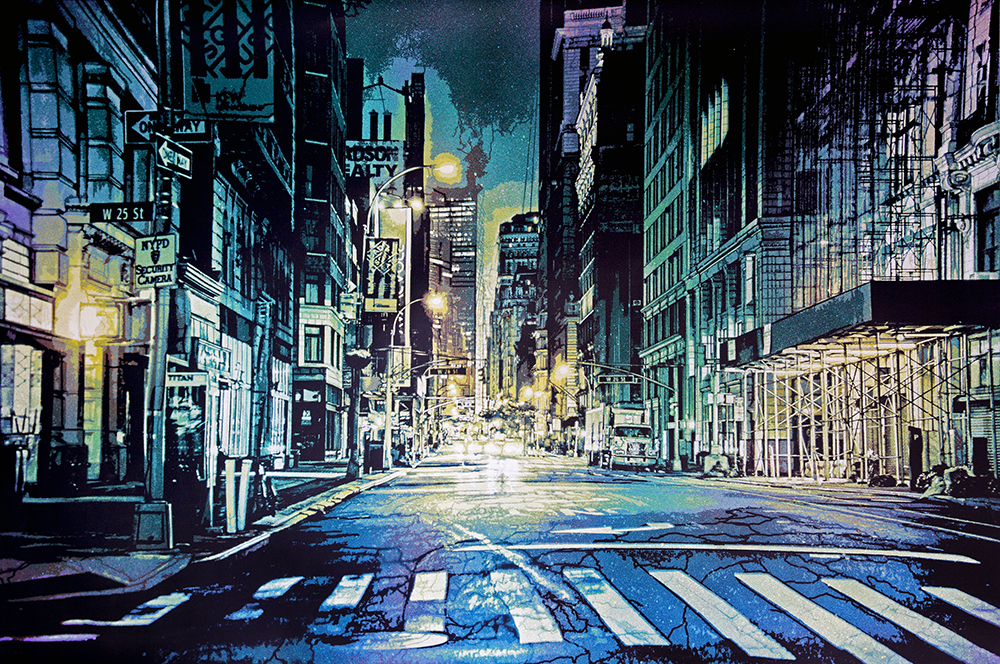 LZ: Architecture, cityscapes and urbanity are powerful and meaningful images to you. Can you tell us what you are conveying when you photograph and paint this imagery?
LH: I’ve don’t have specific meanings to my paintings, just general feelings or abstract ideas in my head. I see an empty city at night as being similar to what I imagine someone’s imagination being like. This giant landscape full of nothing, where anything is possible depending on what you add. The city is just one giant stage where it’s waiting for life to inhabit it. You look at these streets and you just imagine the thousands of people that have walked those streets, the conversations, the love that has been felt, the loss that has happened in the same location. You could position yourself at any intersection of any city and if you stayed there long enough, you will eventually experience the full range of human emotion. So when I see the city at night, with the lights raking over the buildings and cars, I feel like a voyeur who is walking around inside someone’s head as they sleep. I see it as potential.
LZ: Architecture, cityscapes and urbanity are powerful and meaningful images to you. Can you tell us what you are conveying when you photograph and paint this imagery?
LH: I’ve don’t have specific meanings to my paintings, just general feelings or abstract ideas in my head. I see an empty city at night as being similar to what I imagine someone’s imagination being like. This giant landscape full of nothing, where anything is possible depending on what you add. The city is just one giant stage where it’s waiting for life to inhabit it. You look at these streets and you just imagine the thousands of people that have walked those streets, the conversations, the love that has been felt, the loss that has happened in the same location. You could position yourself at any intersection of any city and if you stayed there long enough, you will eventually experience the full range of human emotion. So when I see the city at night, with the lights raking over the buildings and cars, I feel like a voyeur who is walking around inside someone’s head as they sleep. I see it as potential.
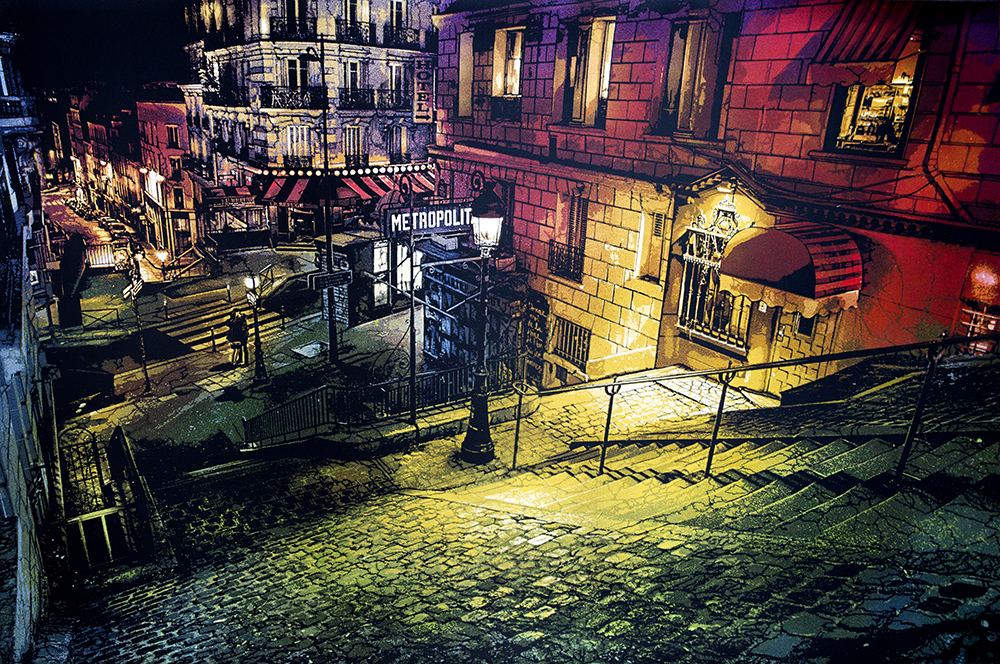 LZ: New York is one of your favorite subjects. What is your relationship with the city? You spent last summer discovering Paris - how do you feel about Paris? Do you feel a different relationship with it than New York?
LH: New York was always the pinnacle of a “city." Being born in the US, New York is the biggest and busiest and if you could make it in New York, you could make it anywhere. But knowing the customs of the United States, speaking English, having friends there means that you can never really see it with fresh eyes. I know too much about New York for it to be fresh. Things seem familiar even if I had not lived there. But living in Paris for the summer was different. I am not fluent in French, and that allowed me to wander through the city observing without being distracted by conversations overheard as I walk down the street. Everything I saw was new. Every place was exciting. Instead of talking to people or reading about it, the only thing I had to go on was the energy. Of course, the tourist areas are known and a basic layout of the city is known, but the smaller streets, the areas where the locals live. Those are the areas that were fun to walk down just to feel the city.
LZ: New York is one of your favorite subjects. What is your relationship with the city? You spent last summer discovering Paris - how do you feel about Paris? Do you feel a different relationship with it than New York?
LH: New York was always the pinnacle of a “city." Being born in the US, New York is the biggest and busiest and if you could make it in New York, you could make it anywhere. But knowing the customs of the United States, speaking English, having friends there means that you can never really see it with fresh eyes. I know too much about New York for it to be fresh. Things seem familiar even if I had not lived there. But living in Paris for the summer was different. I am not fluent in French, and that allowed me to wander through the city observing without being distracted by conversations overheard as I walk down the street. Everything I saw was new. Every place was exciting. Instead of talking to people or reading about it, the only thing I had to go on was the energy. Of course, the tourist areas are known and a basic layout of the city is known, but the smaller streets, the areas where the locals live. Those are the areas that were fun to walk down just to feel the city.
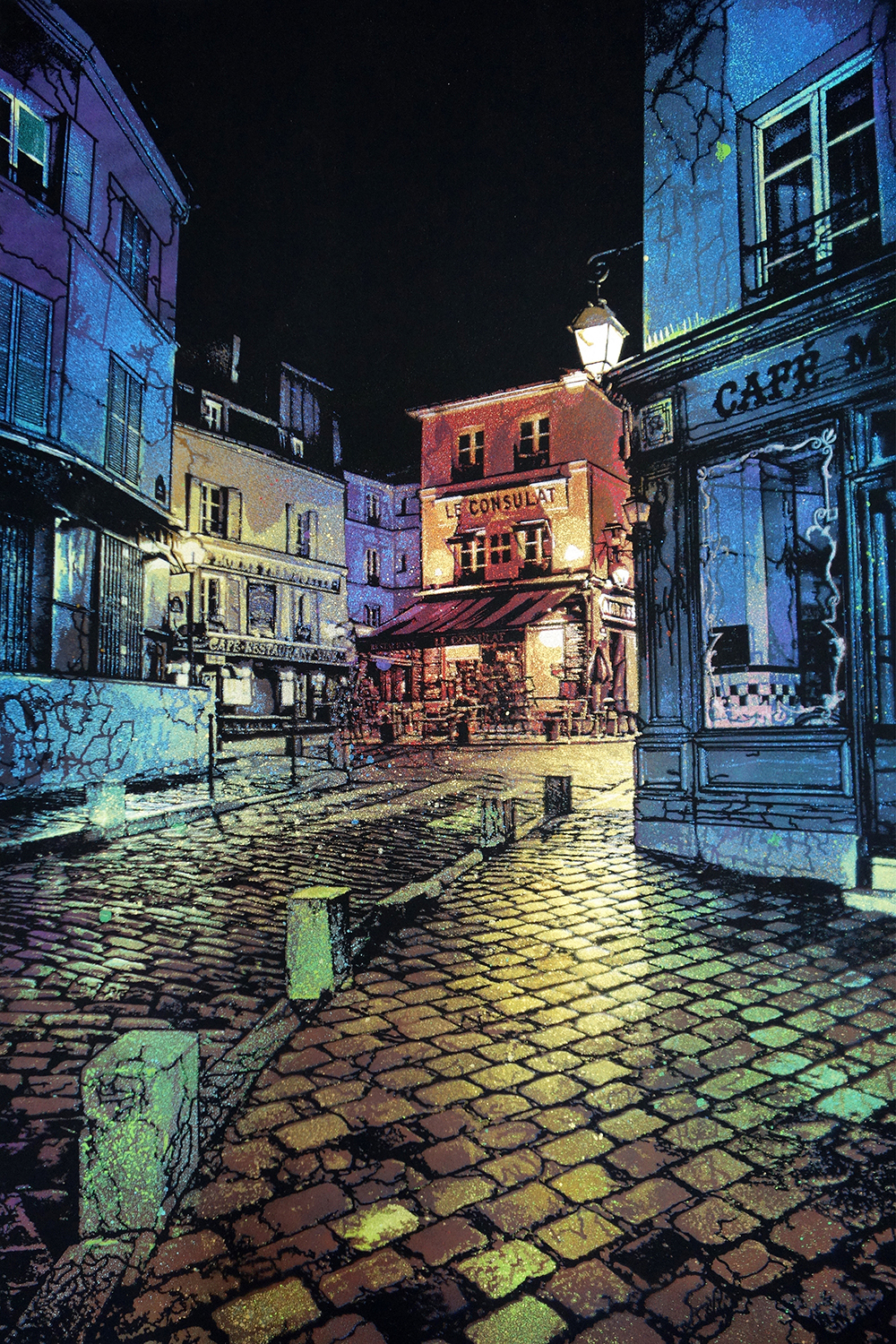 LZ: You’re currently working on one of your largest shows to date for Galerie Openspace...
LH: The show at OpenSpace is titled Nightcrawlers and Lightseekers. The title was born out of the observation that people tend to move towards light or away from it. Nobody likes twilight. Light has always been present in my work, but I like how light can also be a metaphor for knowledge, of insight, of purity, the list goes on. So as I am walking around at night, taking photos, I watch how people walk. I wonder why someone chooses to walk in the shadows, close to the buildings, instead of bathing in the light. I wonder why others are so scared of the shadows. It’s really the same battles people face with their consciousness I suppose. Not everything was meant to be illuminated. The shadows are needed for a balance. With this show, I am continuing to explore light and color within the environment. I am best known for my architectural pieces, and there are ample pieces that continue to explore those environments - from Dubai to Marrakesh to Torino to Paris and of course New York. Additionally, I have begun to do more figurative works. With the figurative pieces I am using the same ideas as the architectural pieces, but instead of going larger and trying to have an overwhelming abundance of detail, they pull back and are an exercise in simplicity. Even though the works may be different visually, I don’t see there being much difference. I see the intricacies of the cityscapes I do as being similar to the mind of the people that I am painting.
Logan Hicks - Light Seekers and Night Scrawlers
3 - 24 February 2018
GALERIE OPENSPACE
116, Bd Richard Lenoir, Paris 11
Discuss Logan Hicks here.
LZ: You’re currently working on one of your largest shows to date for Galerie Openspace...
LH: The show at OpenSpace is titled Nightcrawlers and Lightseekers. The title was born out of the observation that people tend to move towards light or away from it. Nobody likes twilight. Light has always been present in my work, but I like how light can also be a metaphor for knowledge, of insight, of purity, the list goes on. So as I am walking around at night, taking photos, I watch how people walk. I wonder why someone chooses to walk in the shadows, close to the buildings, instead of bathing in the light. I wonder why others are so scared of the shadows. It’s really the same battles people face with their consciousness I suppose. Not everything was meant to be illuminated. The shadows are needed for a balance. With this show, I am continuing to explore light and color within the environment. I am best known for my architectural pieces, and there are ample pieces that continue to explore those environments - from Dubai to Marrakesh to Torino to Paris and of course New York. Additionally, I have begun to do more figurative works. With the figurative pieces I am using the same ideas as the architectural pieces, but instead of going larger and trying to have an overwhelming abundance of detail, they pull back and are an exercise in simplicity. Even though the works may be different visually, I don’t see there being much difference. I see the intricacies of the cityscapes I do as being similar to the mind of the people that I am painting.
Logan Hicks - Light Seekers and Night Scrawlers
3 - 24 February 2018
GALERIE OPENSPACE
116, Bd Richard Lenoir, Paris 11
Discuss Logan Hicks here.
↧
Streets: SNIK (Manchester)

↧
Streets: Banksy (UK)

↧
Streets: Invader (Bhutan)

↧
↧
Streets World Roundup (Dec ’17 – Jan ’18)

 Dabs Myla in Melbourne.[/caption]
[caption id="attachment_329358" align="aligncenter" width="1080"]
Dabs Myla in Melbourne.[/caption]
[caption id="attachment_329358" align="aligncenter" width="1080"] Aiko in Saigon.[/caption]
[caption id="attachment_329359" align="aligncenter" width="1080"]
Aiko in Saigon.[/caption]
[caption id="attachment_329359" align="aligncenter" width="1080"] JR in San Francisco.[/caption]
https://www.instagram.com/p/BekqdGDh6I5/
JR in San Francisco.[/caption]
https://www.instagram.com/p/BekqdGDh6I5/
 https://www.instagram.com/p/Bc7HM7MgcOl/
[caption id="attachment_329387" align="aligncenter" width="1080"]
https://www.instagram.com/p/Bc7HM7MgcOl/
[caption id="attachment_329387" align="aligncenter" width="1080"] Aaron Li-Hill in New York.[/caption]
[caption id="attachment_329389" align="aligncenter" width="2048"]
Aaron Li-Hill in New York.[/caption]
[caption id="attachment_329389" align="aligncenter" width="2048"] L.E.O. & Axel Void in St. Petersbourg, Florida.[/caption]
[caption id="attachment_329391" align="aligncenter" width="1080"]
L.E.O. & Axel Void in St. Petersbourg, Florida.[/caption]
[caption id="attachment_329391" align="aligncenter" width="1080"] El Mac in at the San Jose Museum of Art. Photo @ericheights[/caption]
https://www.instagram.com/p/BdLRF3Gj8QN
[caption id="attachment_329397" align="aligncenter" width="1080"]
El Mac in at the San Jose Museum of Art. Photo @ericheights[/caption]
https://www.instagram.com/p/BdLRF3Gj8QN
[caption id="attachment_329397" align="aligncenter" width="1080"] Fanakapan in London.[/caption]
[caption id="attachment_329396" align="aligncenter" width="1080"]
Fanakapan in London.[/caption]
[caption id="attachment_329396" align="aligncenter" width="1080"] Audrey Kawasaki in Miami for Wynwood Walls.[/caption]
Audrey Kawasaki in Miami for Wynwood Walls.[/caption]
↧
Interviews / Previews: Vhils –“Annihilation” @ Over The Influence (Los Angeles)

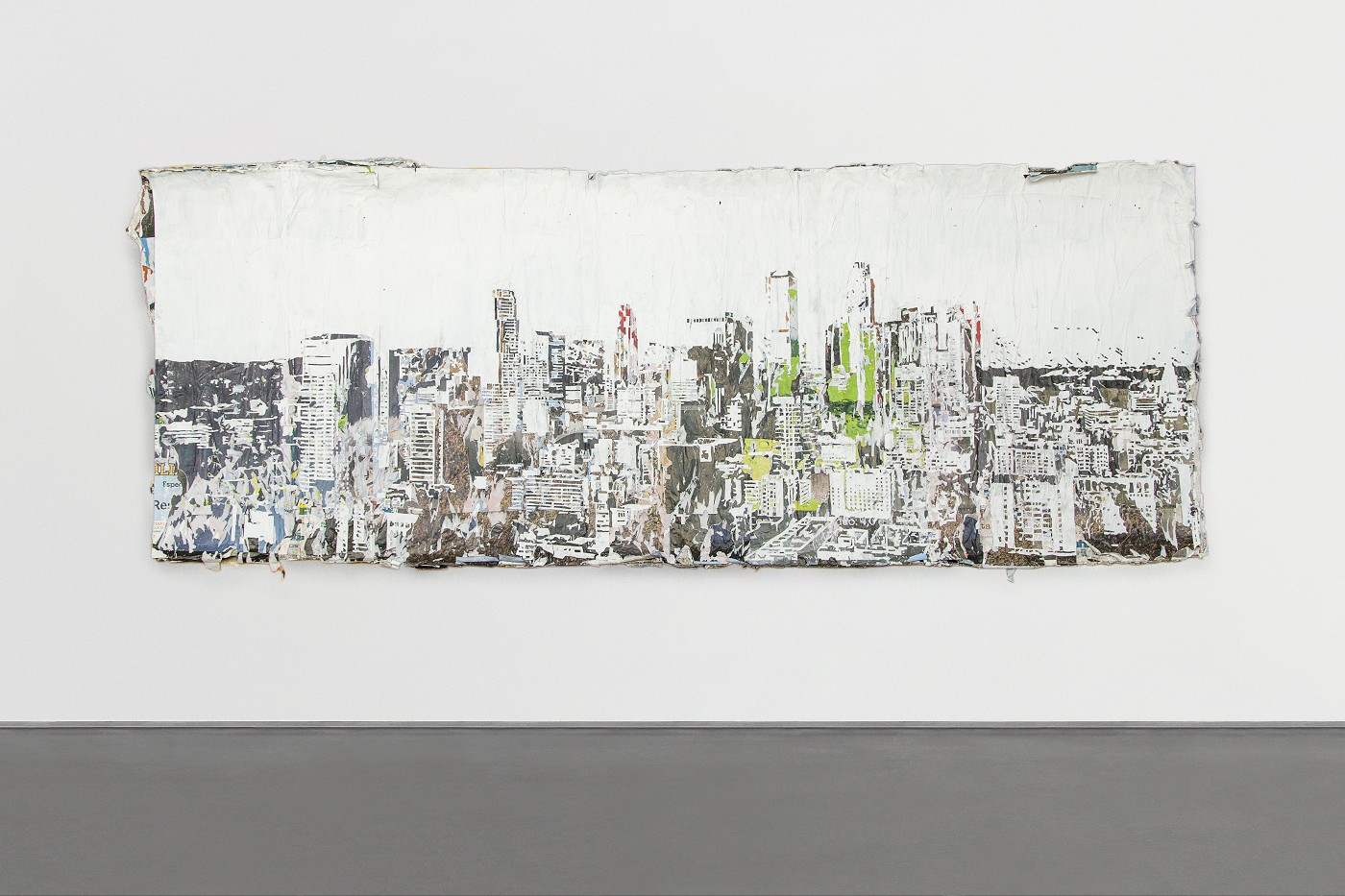 Sasha Bogojev (SB): Where does the title of the show come from?
Alexandre Farto (AF): This exhibition can be seen as a direct continuation of the work I've been developing recently, particularly over the last two years when I was based in Asia while also taking inspiration from other locations across Europe, Africa, Oceania, and the Americas. This has been exploring a variety of topics related to the current model of globalized development, namely its impact on local identities and its contribution towards the process of cultural homogenization we're increasingly witnessing around the world today. It can be seen as a sum of all the themes and subjects the work has been exploring based on the idea that we've opened a new kind of Pandora's box and are currently ignorant of its consequences in the long run. The concept of annihilation is connected with the process of cultural erosion but also with the impact of mass consumption and unbridled material growth and development associated with this new global paradigm on the sustainability of the planet and its limited resources.
Sasha Bogojev (SB): Where does the title of the show come from?
Alexandre Farto (AF): This exhibition can be seen as a direct continuation of the work I've been developing recently, particularly over the last two years when I was based in Asia while also taking inspiration from other locations across Europe, Africa, Oceania, and the Americas. This has been exploring a variety of topics related to the current model of globalized development, namely its impact on local identities and its contribution towards the process of cultural homogenization we're increasingly witnessing around the world today. It can be seen as a sum of all the themes and subjects the work has been exploring based on the idea that we've opened a new kind of Pandora's box and are currently ignorant of its consequences in the long run. The concept of annihilation is connected with the process of cultural erosion but also with the impact of mass consumption and unbridled material growth and development associated with this new global paradigm on the sustainability of the planet and its limited resources.
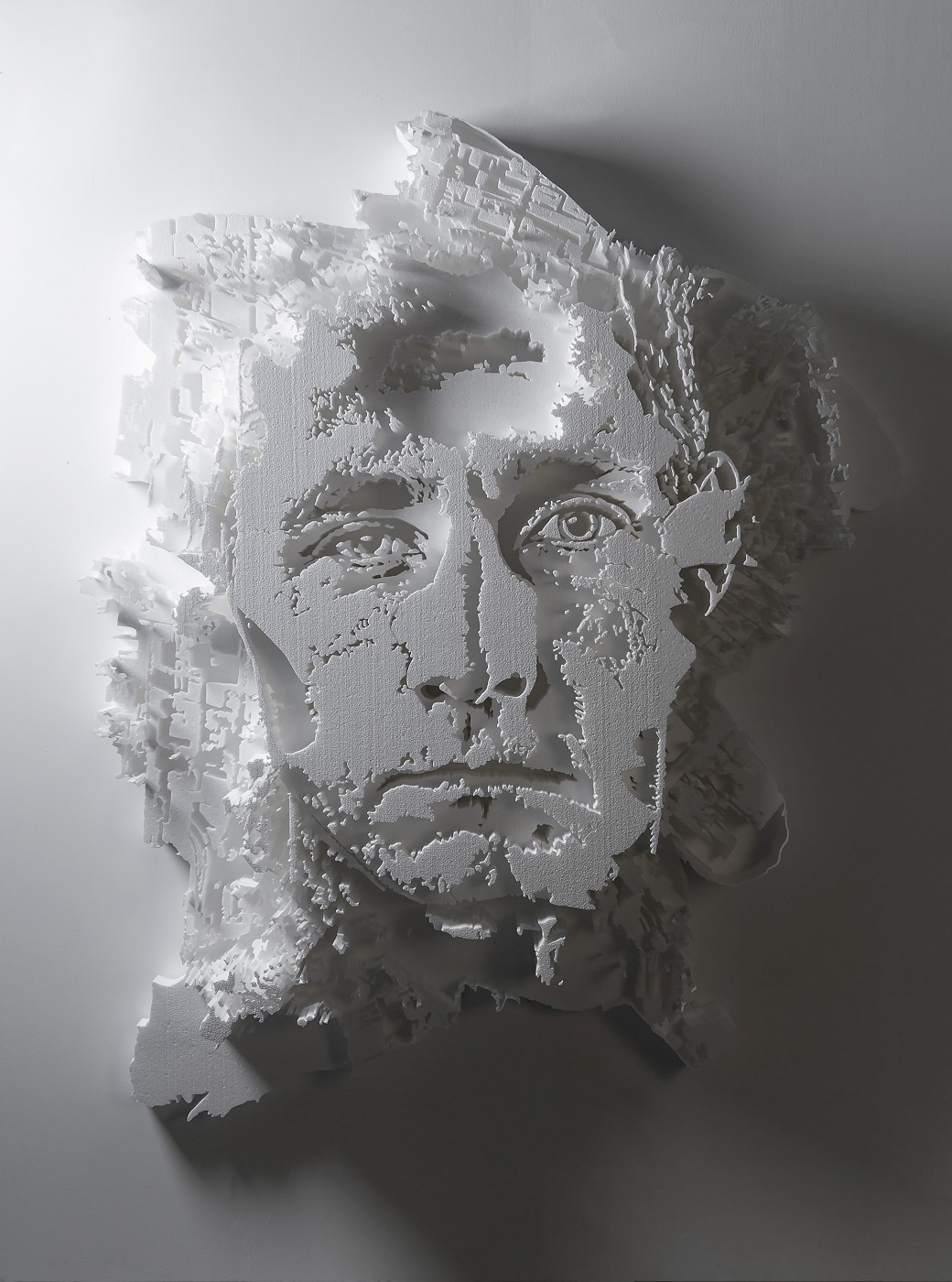 SB: Are the works in the show connected with LA or the US in any way?
AF: In order to illustrate this reflection on the reality of this new global paradigm, Annihilation features various artworks with a patchwork quality that are woven from a wide range of subjects, people and materials sourced from different locations around the world. These include Los Angeles and other US locations, but also other cities I've worked in like Lisbon, Hong Kong, Beijing, Rio de Janeiro, London or Paris. This intentional juxtaposition of materials and subject matter mirrors the interplay between elements from different cultures which we can see at work today in these increasingly homogenized large urban environments, and seeks to both confront and establish a dialogue that explores the underlying similarities and differences between them, which is to say, the tensions between local and global realities.
SB: Are the works in the show connected with LA or the US in any way?
AF: In order to illustrate this reflection on the reality of this new global paradigm, Annihilation features various artworks with a patchwork quality that are woven from a wide range of subjects, people and materials sourced from different locations around the world. These include Los Angeles and other US locations, but also other cities I've worked in like Lisbon, Hong Kong, Beijing, Rio de Janeiro, London or Paris. This intentional juxtaposition of materials and subject matter mirrors the interplay between elements from different cultures which we can see at work today in these increasingly homogenized large urban environments, and seeks to both confront and establish a dialogue that explores the underlying similarities and differences between them, which is to say, the tensions between local and global realities.
 SB: Is the work in any way appropriated or inspired by local elements in the LA and/or US?
AF: Yes, it draws a lot from American culture and the leading role played by the US in ensuring the cultural hegemony of the West in today's world, even though these references are diluted among those sourced from other countries. Being home to the powerful film, entertainment, and tech industries, Los Angeles has played a key part in the creation and diffusion of various elements that have shaped contemporary mass and popular culture around the globe, which are important components of this model of globalized development which my work has been analyzing. By taking this city as one of the key locations of this new world paradigm, Annihilation seeks to present a reflection on its contribution towards the forging of new attitudes, beliefs and behaviors by other nations and the emergence of a new transnational global identity that has been eroding the elements that once made each culture unique. At the same time, by taking some elements of this new Western-flavored global culture that have been absorbed by other countries in this process of acculturation and presenting them in Los Angeles, the exhibition can also be seen as staging their symbolic return to the city and the dominant culture from which they first emerged. So, in this sense, it also stages this full circle of dialogue and clash between cultures.
SB: How do you feel about presenting the work that speaks about effects of urban development in "the largest (area-wise) urban region in the world"?
AF: Besides the ideas I outlined above, this is yet another reason why this exhibition makes so much sense to present here in Los Angeles. Over the last two years I did a lot of work in Hong Kong and Macao, two fairly small cities (in terms of area) yet with some of the highest population densities in the world, so it's very interesting to be working in this horizontal model of a city as opposed to the vertical models I found there and being able to compare the similarities and the differences between them.
SB: Is the work in any way appropriated or inspired by local elements in the LA and/or US?
AF: Yes, it draws a lot from American culture and the leading role played by the US in ensuring the cultural hegemony of the West in today's world, even though these references are diluted among those sourced from other countries. Being home to the powerful film, entertainment, and tech industries, Los Angeles has played a key part in the creation and diffusion of various elements that have shaped contemporary mass and popular culture around the globe, which are important components of this model of globalized development which my work has been analyzing. By taking this city as one of the key locations of this new world paradigm, Annihilation seeks to present a reflection on its contribution towards the forging of new attitudes, beliefs and behaviors by other nations and the emergence of a new transnational global identity that has been eroding the elements that once made each culture unique. At the same time, by taking some elements of this new Western-flavored global culture that have been absorbed by other countries in this process of acculturation and presenting them in Los Angeles, the exhibition can also be seen as staging their symbolic return to the city and the dominant culture from which they first emerged. So, in this sense, it also stages this full circle of dialogue and clash between cultures.
SB: How do you feel about presenting the work that speaks about effects of urban development in "the largest (area-wise) urban region in the world"?
AF: Besides the ideas I outlined above, this is yet another reason why this exhibition makes so much sense to present here in Los Angeles. Over the last two years I did a lot of work in Hong Kong and Macao, two fairly small cities (in terms of area) yet with some of the highest population densities in the world, so it's very interesting to be working in this horizontal model of a city as opposed to the vertical models I found there and being able to compare the similarities and the differences between them.
 SB: When was the first time you visited the US and how was that experience for you?
AF: My first trip to the US was when I visited New York ten years ago for the Outsiders group exhibition curated by Steve Lazarides. As someone coming from a European city, the differences were quite clear but what was interesting was to find also many similarities, especially related to the contrasts by which cities operate in. The city's liveliness and the impressive amount of things to do in terms of culture and the arts was of course very impressive but at the same time the similarities that are common to the contemporary urban model also made me think about the common challenges the world is facing right now.
SB: Did your impression match the expectations you've built from movies etc?
AF: This is an interesting question, as it highlights the point I was trying to make above about the cultural impact that the US film industry has had around the world. The influence of its images, but also the ideas, concepts and worldview associated with them, is so pervasive in global terms that for someone who comes from overseas it's hard not to have already been influenced by the reality they present. During that first visit to New York, but even today after I've travelled and worked extensively across the US, I understood that it's very difficult to dissociate the reality of this country from the fictionalized version we consume through its movies but at the same time it was also very clear that there is so much more to this country than what you do see in them.
SB: When was the first time you visited the US and how was that experience for you?
AF: My first trip to the US was when I visited New York ten years ago for the Outsiders group exhibition curated by Steve Lazarides. As someone coming from a European city, the differences were quite clear but what was interesting was to find also many similarities, especially related to the contrasts by which cities operate in. The city's liveliness and the impressive amount of things to do in terms of culture and the arts was of course very impressive but at the same time the similarities that are common to the contemporary urban model also made me think about the common challenges the world is facing right now.
SB: Did your impression match the expectations you've built from movies etc?
AF: This is an interesting question, as it highlights the point I was trying to make above about the cultural impact that the US film industry has had around the world. The influence of its images, but also the ideas, concepts and worldview associated with them, is so pervasive in global terms that for someone who comes from overseas it's hard not to have already been influenced by the reality they present. During that first visit to New York, but even today after I've travelled and worked extensively across the US, I understood that it's very difficult to dissociate the reality of this country from the fictionalized version we consume through its movies but at the same time it was also very clear that there is so much more to this country than what you do see in them.
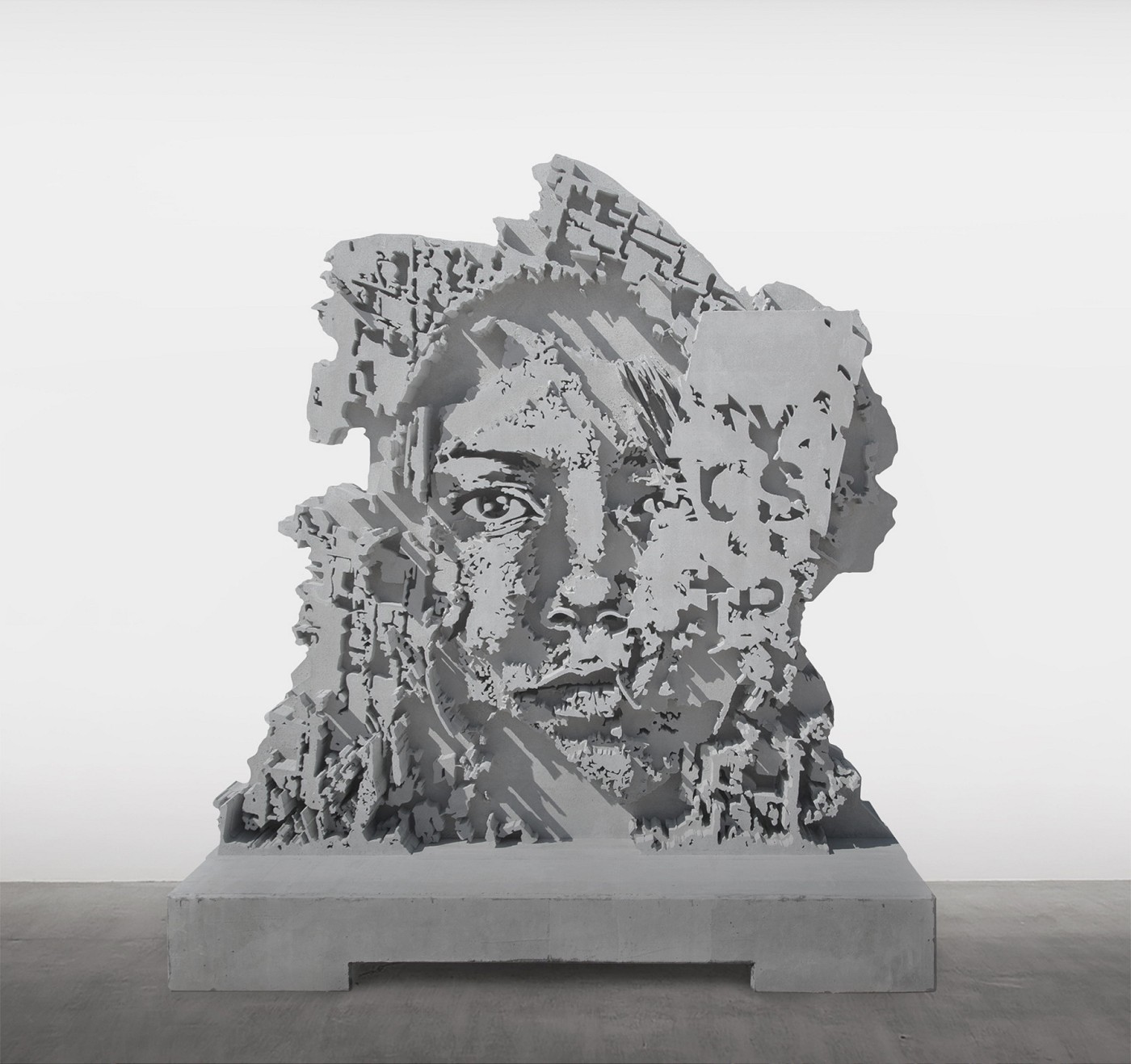 SB: How does the US compare to your native Portugal when speaking of erosion of cultural uniqueness?
AF: We know that cultures are not static. They change and evolve over time, they absorb and adapt elements of other cultures they've come into contact with. This has been occurring throughout history, so there is nothing new to this. The issue today is the unprecedented scale and speed at which this process is taking place, besides the fact that the entire world is being influenced to absorb and adapt the same elements at the very same time. When we speak of this Western-led cultural globalization, this doesn't mean that the Western nations themselves haven't been victims of the same process of erosion. In the early- to mid-20th century, this process used to be called modernization and it was also responsible for eroding many cultural traits and practices that people in the West had been following for centuries. And this obviously includes the US and Europe.
The US only started leading this process after World War II, for all the historical reasons we know, and despite the fact that, in many ways, it directed its fundamental essence, it too was transformed by it. The case of Portugal is interesting because it was only really exposed to this modernization in the last 40 years, as the country was governed by an inward-looking right-wing conservative dictatorship between 1928 and 1974. Between the mid-1970s and the mid- to late-1980s, Portugal was made to catch up with the rest of the Western nations, and the intensive process of development and modernization it underwent was brutal, in the sense that it changed the culture almost overnight. This is also happening in many other countries today. This short, sharp shock of development is what many people are finding hard to adapt to. Changes that used to occur over several generations are now taking place in the course of a few years. These are major challenges the world is facing today, and despite being led by some countries, mainly the US and other Western nations, it doesn't mean that their populations are immune to these transformations, as we have recently been seeing in the reactionary socio-political movements that have been growing in them.
SB: How does the US compare to your native Portugal when speaking of erosion of cultural uniqueness?
AF: We know that cultures are not static. They change and evolve over time, they absorb and adapt elements of other cultures they've come into contact with. This has been occurring throughout history, so there is nothing new to this. The issue today is the unprecedented scale and speed at which this process is taking place, besides the fact that the entire world is being influenced to absorb and adapt the same elements at the very same time. When we speak of this Western-led cultural globalization, this doesn't mean that the Western nations themselves haven't been victims of the same process of erosion. In the early- to mid-20th century, this process used to be called modernization and it was also responsible for eroding many cultural traits and practices that people in the West had been following for centuries. And this obviously includes the US and Europe.
The US only started leading this process after World War II, for all the historical reasons we know, and despite the fact that, in many ways, it directed its fundamental essence, it too was transformed by it. The case of Portugal is interesting because it was only really exposed to this modernization in the last 40 years, as the country was governed by an inward-looking right-wing conservative dictatorship between 1928 and 1974. Between the mid-1970s and the mid- to late-1980s, Portugal was made to catch up with the rest of the Western nations, and the intensive process of development and modernization it underwent was brutal, in the sense that it changed the culture almost overnight. This is also happening in many other countries today. This short, sharp shock of development is what many people are finding hard to adapt to. Changes that used to occur over several generations are now taking place in the course of a few years. These are major challenges the world is facing today, and despite being led by some countries, mainly the US and other Western nations, it doesn't mean that their populations are immune to these transformations, as we have recently been seeing in the reactionary socio-political movements that have been growing in them.
 SB: How could the current socio-political climate affect the elements your work is focused on?
AF: Seeking to reflect on the present-day human condition in contemporary urban societies, most of my work has been addressing social issues in one way or another, namely those caused by these transformations I mentioned above that result from this tension between local and global realities. It does so with the intention of trying to help make visible these issues that seem invisible to most. I'm interested in these local struggles as they tell us a lot about the essence and the impact of this global transformation and can point us towards providing us with global solutions for these local issues. We can't stop the process of globalization, but we can try to transform it, making sure it adapts to local needs. The same goes for development. There are both positive and negative features in these processes but the main issue here is that people have a right to take part in decisions that concern their future and their well-being. Development is necessary but it has to be oriented towards the people.
SB: Did the current socio-political climate affect or inspire any of the pieces in any way?
AF: As explained above, both the exhibition and the artworks themselves are inspired by the larger socio-economic themes I've been exploring over the years.
SB: Are there any new techniques or approaches introduced in the show?
AF: The exhibition features an entirely new body of work which includes some new elements I've added to old techniques, such as the new series of carved wooden doors with inlaid wooden overlays, and a series of massive pieces with hand-carved advertising posters removed from the streets, among others. As for new techniques, it will also include two concrete cast sculptures that are conceptually linked with the styrofoam dioramas I've been working on for a few years now. These are basically three-dimensional sculptural panoramas that can be read either as a face or a cityscape, reflecting the concept of reciprocal shaping that exists between people and the cities they live in.
SB: How could the current socio-political climate affect the elements your work is focused on?
AF: Seeking to reflect on the present-day human condition in contemporary urban societies, most of my work has been addressing social issues in one way or another, namely those caused by these transformations I mentioned above that result from this tension between local and global realities. It does so with the intention of trying to help make visible these issues that seem invisible to most. I'm interested in these local struggles as they tell us a lot about the essence and the impact of this global transformation and can point us towards providing us with global solutions for these local issues. We can't stop the process of globalization, but we can try to transform it, making sure it adapts to local needs. The same goes for development. There are both positive and negative features in these processes but the main issue here is that people have a right to take part in decisions that concern their future and their well-being. Development is necessary but it has to be oriented towards the people.
SB: Did the current socio-political climate affect or inspire any of the pieces in any way?
AF: As explained above, both the exhibition and the artworks themselves are inspired by the larger socio-economic themes I've been exploring over the years.
SB: Are there any new techniques or approaches introduced in the show?
AF: The exhibition features an entirely new body of work which includes some new elements I've added to old techniques, such as the new series of carved wooden doors with inlaid wooden overlays, and a series of massive pieces with hand-carved advertising posters removed from the streets, among others. As for new techniques, it will also include two concrete cast sculptures that are conceptually linked with the styrofoam dioramas I've been working on for a few years now. These are basically three-dimensional sculptural panoramas that can be read either as a face or a cityscape, reflecting the concept of reciprocal shaping that exists between people and the cities they live in.
 SB: What is the scale of works that will be presented?
AF: It's very diverse, ranging from small and medium-sized works like those on acid-etched metal plates and carved wooden doors, to the large concrete dioramas and a few massive compositions with carved posters.
SB: Do you have anything else planned during your stay in the US?
AF: Yes, there are a few other projects under discussion but these will be announced if and when they are confirmed.
SB: What other projects do you have planned for the rest of the year?
AF: I'm trying to work on fewer projects this year so that I can have more time to focus properly on each. Amongst a few other surprises I have in store, I've been working towards a big museum show in Paris that will open in May and I'm really looking forward to this.
SB: What is the scale of works that will be presented?
AF: It's very diverse, ranging from small and medium-sized works like those on acid-etched metal plates and carved wooden doors, to the large concrete dioramas and a few massive compositions with carved posters.
SB: Do you have anything else planned during your stay in the US?
AF: Yes, there are a few other projects under discussion but these will be announced if and when they are confirmed.
SB: What other projects do you have planned for the rest of the year?
AF: I'm trying to work on fewer projects this year so that I can have more time to focus properly on each. Amongst a few other surprises I have in store, I've been working towards a big museum show in Paris that will open in May and I'm really looking forward to this.
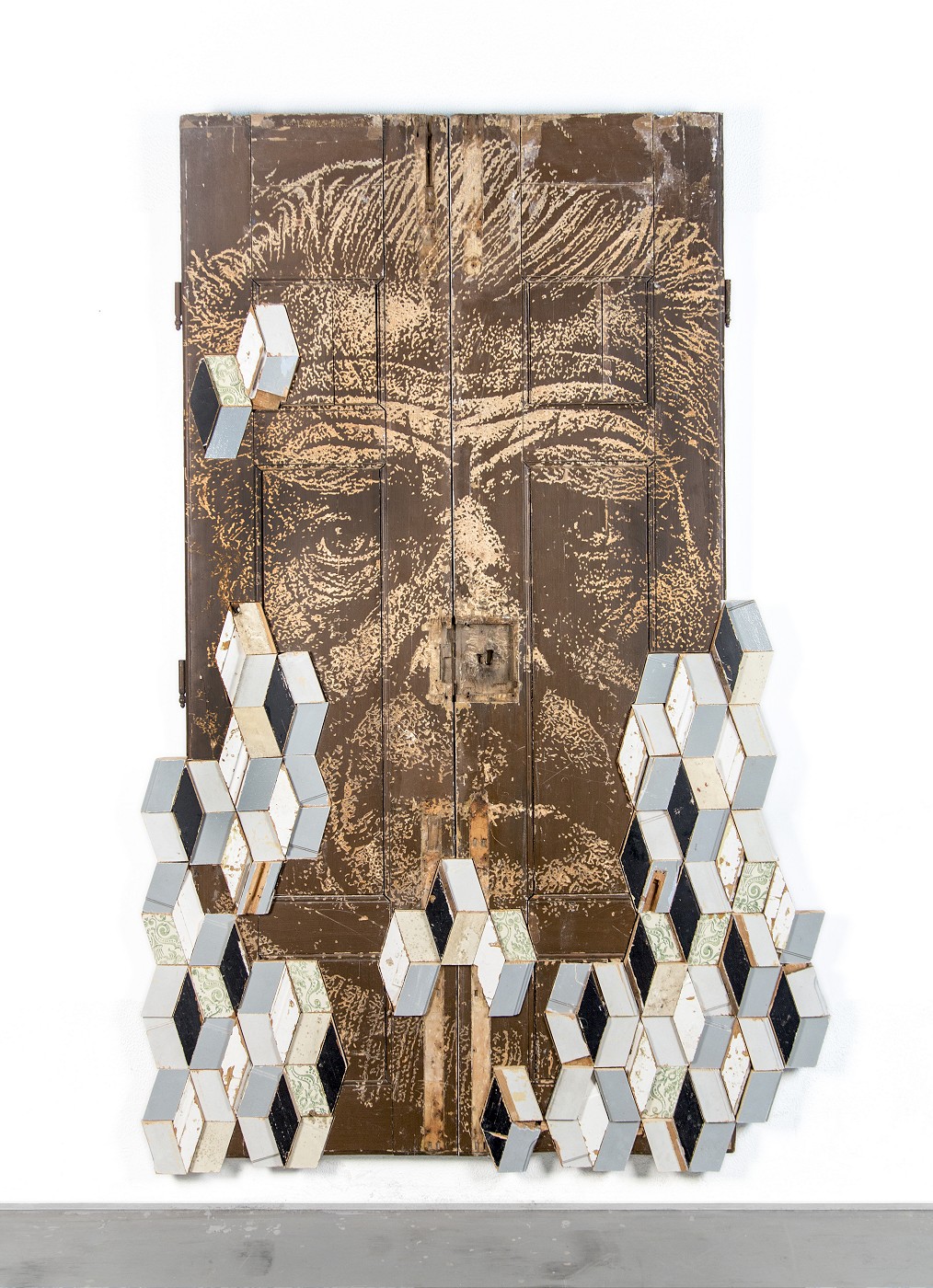 Discuss Vhils here.
Discuss Vhils here.
↧
Streets: Vhils x Shepard Fairey –“American Dreamers” (Los Angeles)

↧
Streets: Andrew Hem (Italy)

↧
↧
Overtime: Feb 1 – Feb 25

- Frieze to launch Los Angeles art fair at Paramount Studios in 2019.
- 5Pointz graffiti artist awarded $6.7 million for destroyed murals. Developer is planning to appeal.
- Another San Francisco art fair will target the ever-elusive tech industry collector.
- How the glitz and excess of the 1980s shaped contemporary art.
- Art storage facilities offer a new model for galleries priced out of Chelsea.
- For NY artist’s struggling to pay for their studios, New York City is enlisting nonprofits to help you out.
- Los Angeles's Marc Foxx Gallery closes after more than 20 years.
- Years after controversial sale, art from Japanese Internment Camps go on view in Los Angeles at the JANM.
- Hidden details are uncovered beneath the surface of Picasso’s Blue Period painting.
- Jerry Saltz reviewing art made by artificial intelligence.
- How Paul Klee influenced a generation of American artists, from Pollock to Motherwell.
- Caledonia Curry’s (aka Swoon) first career retrospective at the Cincinnati’s Contemporary Arts Center (CAC).
- Hauser & Wirth LA opens first gallery exhibition of Mark Bradford's work in his hometown in over 15 years.
- The botany in Obama's official portrait at The Smithsonian’s National Portrait Gallery, created by New York artist Kehinde Wiley, represents a history employed by the language of flowers.
- Demand soars for Amy Sherald’s work after reveal of her beautiful portrait of the First Lady Michelle Obama.
- Insight into why the Obama portraits are so important.
- How Bob Ross became everyone’s favorite art teacher painter, a reputation that still holds weight even today from his 1970s tv show “The Joy of Painting” on PBS.
- Danish-Icelandic artist Olafur Eliasson is literally shining a light onto the world’s environmental crisis.
- Before he was a famous artist, Basquiat’s apartment was his gallery. New show at Cranbrook Art Museum.
- Architect Thomas Heatherwick’s giant new structure aims to be an Eiffel Tower for New York. Genius or folly?
- Hiroshi Sugimoto revamps Hirshhorn Museum Lobby which includes a 700-year-old Nutmeg Tree.
- Q+A with José Parlá about his recent mural “Amistad América” at the University of Texas’ newly opening Rowling Hall in Austin.
- Vhils x Shepard Fairey print launch today at Over The Influence in Los Angeles.
- An interview with Usugrow on The Hundreds, 13 years after they first worked together. New collaboration here.
- JR and Agnès Varda documentary nabs Oscar nomination.
- Jeremy Fish one of the artists to have artwork unveiled in Union Square (San Francisco).
- An interview with John Jacobsmeyer on his new show in New York.
- Leading up to his show in Los Angeles, Van Arno sits down to answer some questions.
↧
Streets: Onejessa (Sydney)

↧
Streets: Jen Stark –“Tunnel Vision” (Los Angeles)

↧
More Pages to Explore .....








